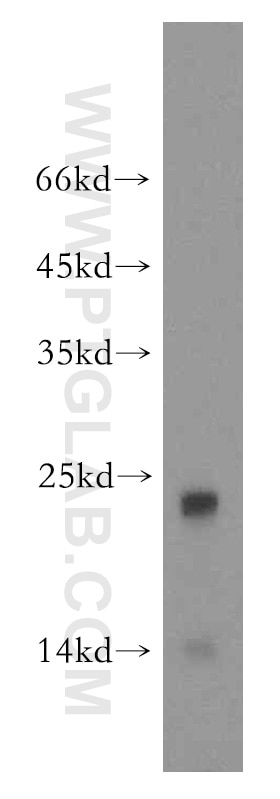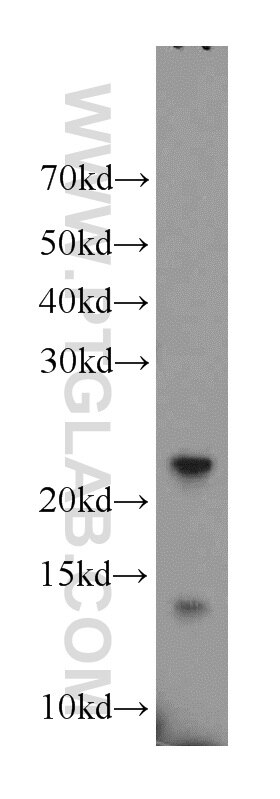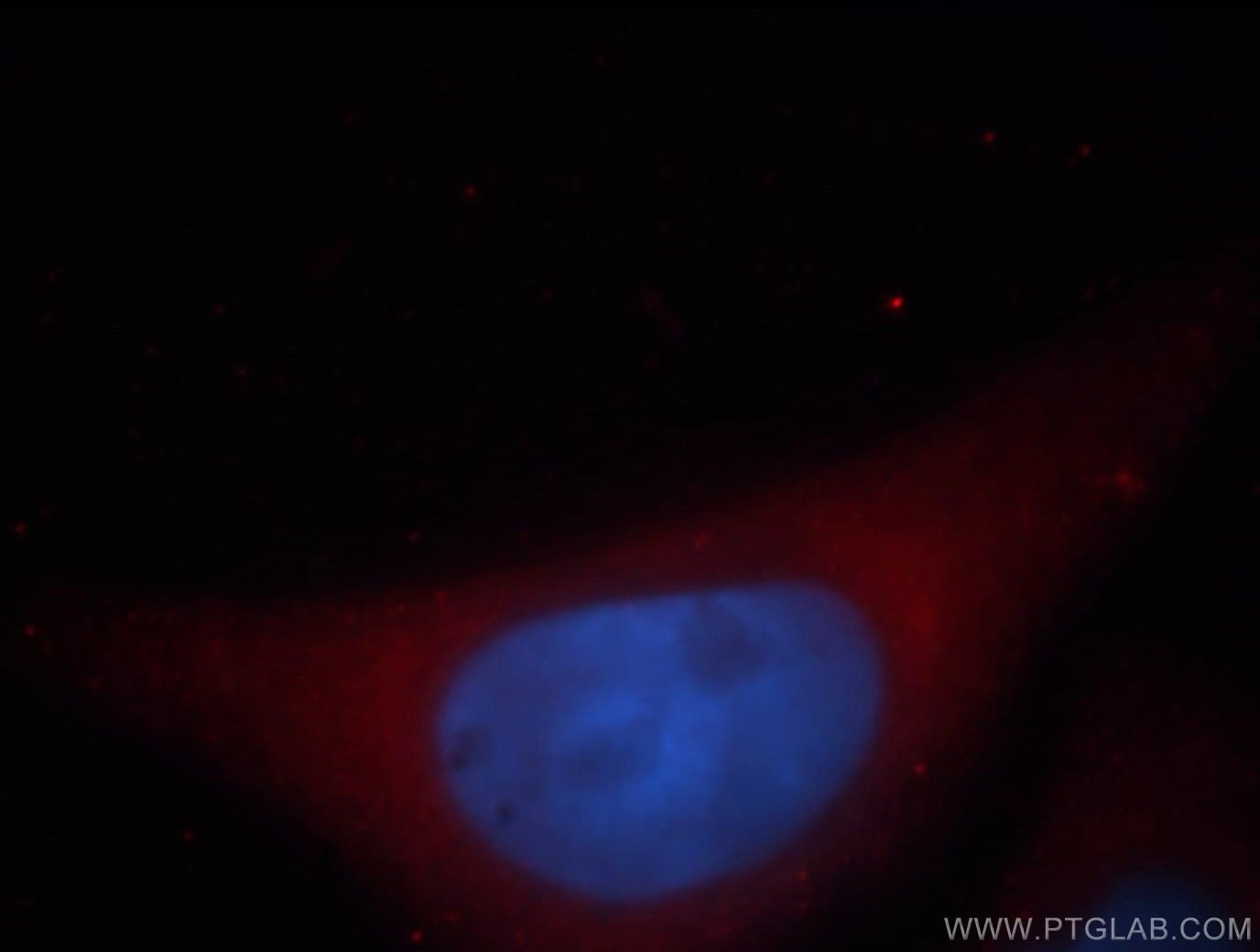Tested Applications
| Positive WB detected in | human testis tissue |
| Positive IF/ICC detected in | HepG2 cells, Hela cells |
Recommended dilution
| Application | Dilution |
|---|---|
| Western Blot (WB) | WB : 1:500-1:1000 |
| Immunofluorescence (IF)/ICC | IF/ICC : 1:10-1:100 |
| It is recommended that this reagent should be titrated in each testing system to obtain optimal results. | |
| Sample-dependent, Check data in validation data gallery. | |
Published Applications
| WB | See 1 publications below |
Product Information
14509-1-AP targets UBL4B in WB, IF/ICC, ELISA applications and shows reactivity with human, mouse, rat samples.
| Tested Reactivity | human, mouse, rat |
| Cited Reactivity | human |
| Host / Isotype | Rabbit / IgG |
| Class | Polyclonal |
| Type | Antibody |
| Immunogen |
CatNo: Ag5968 Product name: Recombinant human UBL4B protein Source: e coli.-derived, PGEX-4T Tag: GST Domain: 1-174 aa of BC058929 Sequence: MFLTVKLLLGQRCSLKVSGQESVATLKRLVSRRLKVPEEQQHLLFRGQLLEDDKHLSDYCIGPNASINVIMQPLEKMALKEAHQPQTQPLWHQLGLVLAKHFEPQDAKAVLQLLRQEHEERLQKISLEHLEQLAQYLLAEEPHVEPAGERELEAKARPQSSCDMEEKEEAAADQ Predict reactive species |
| Full Name | ubiquitin-like 4B |
| Calculated Molecular Weight | 20 kDa |
| Observed Molecular Weight | 22-25 kDa |
| GenBank Accession Number | BC058929 |
| Gene Symbol | UBL4B |
| Gene ID (NCBI) | 164153 |
| RRID | AB_10640905 |
| Conjugate | Unconjugated |
| Form | Liquid |
| Purification Method | Antigen affinity purification |
| UNIPROT ID | Q8N7F7 |
| Storage Buffer | PBS with 0.02% sodium azide and 50% glycerol, pH 7.3. |
| Storage Conditions | Store at -20°C. Stable for one year after shipment. Aliquoting is unnecessary for -20oC storage. 20ul sizes contain 0.1% BSA. |
Protocols
| Product Specific Protocols | |
|---|---|
| IF protocol for UBL4B antibody 14509-1-AP | Download protocol |
| WB protocol for UBL4B antibody 14509-1-AP | Download protocol |
| Standard Protocols | |
|---|---|
| Click here to view our Standard Protocols |










